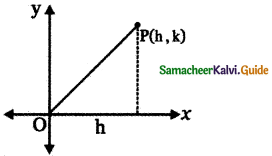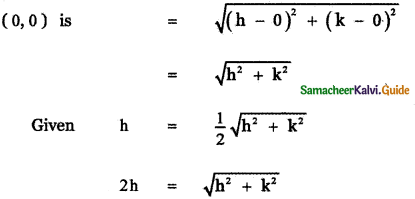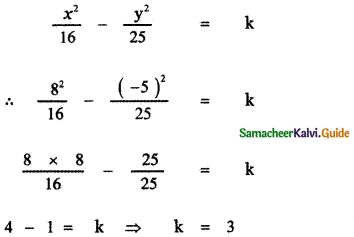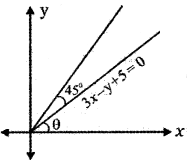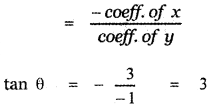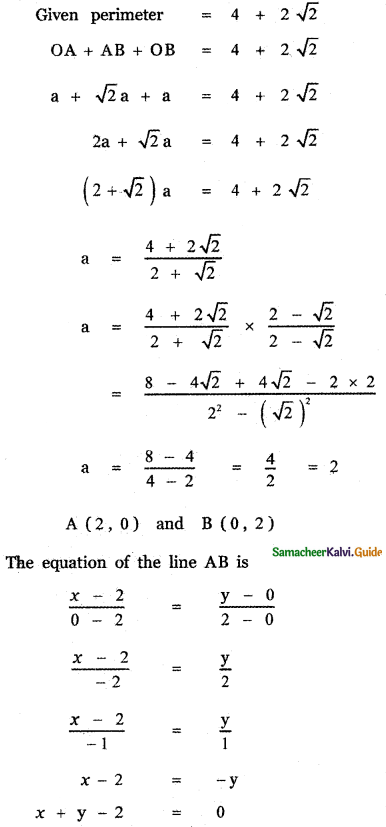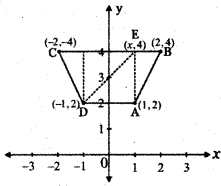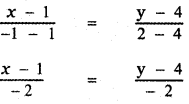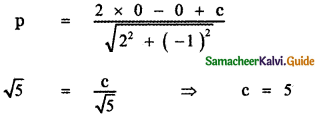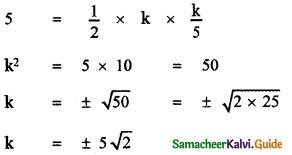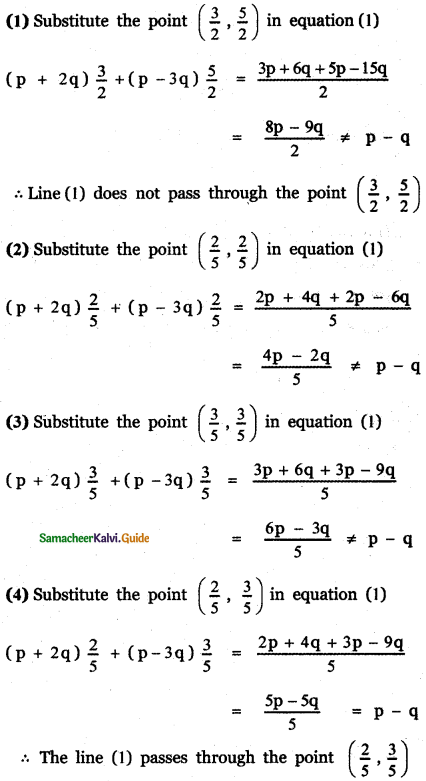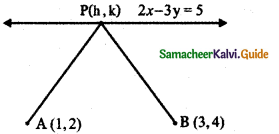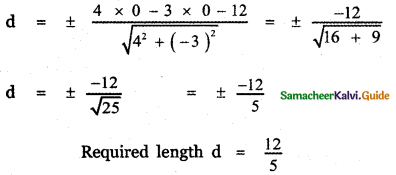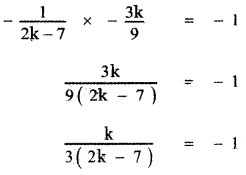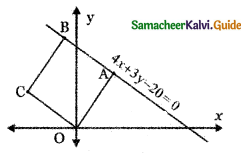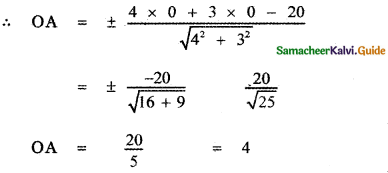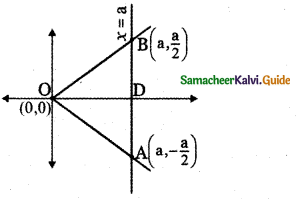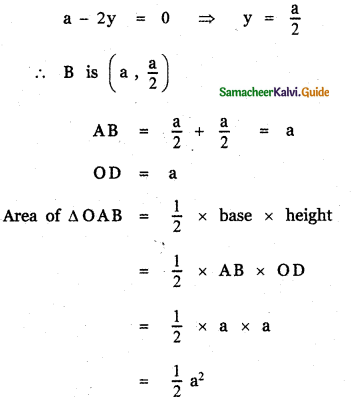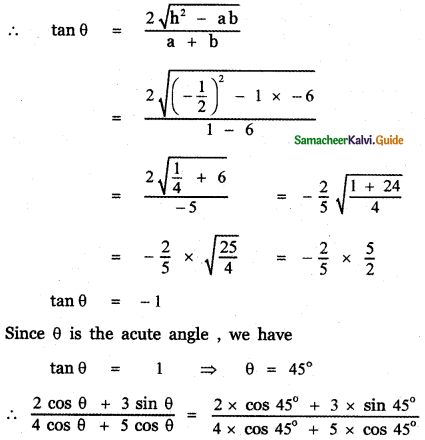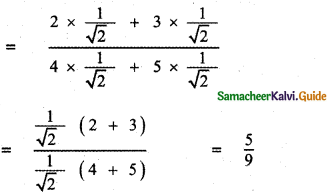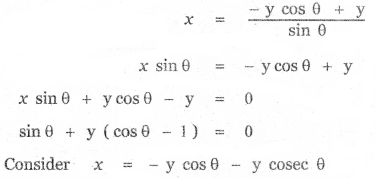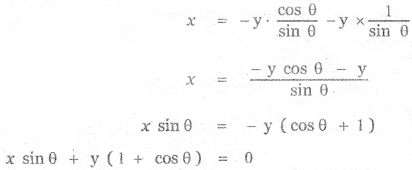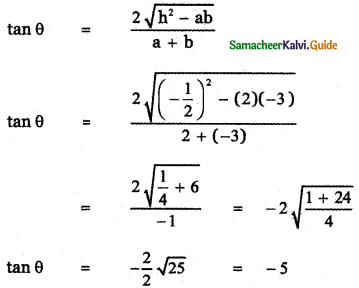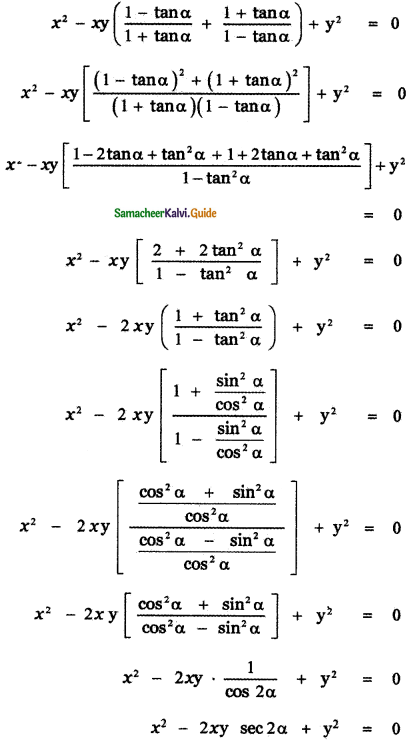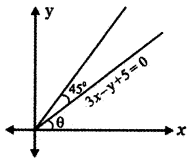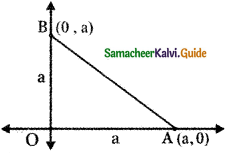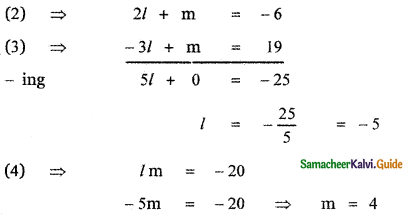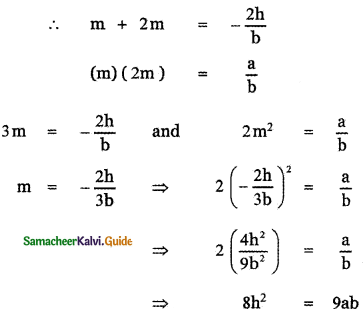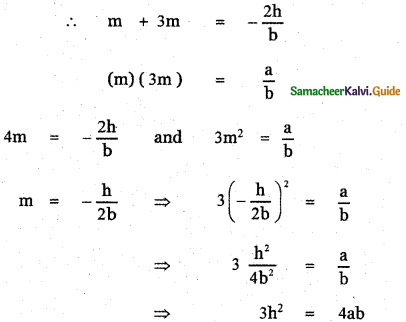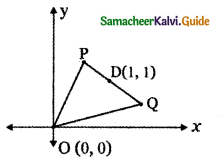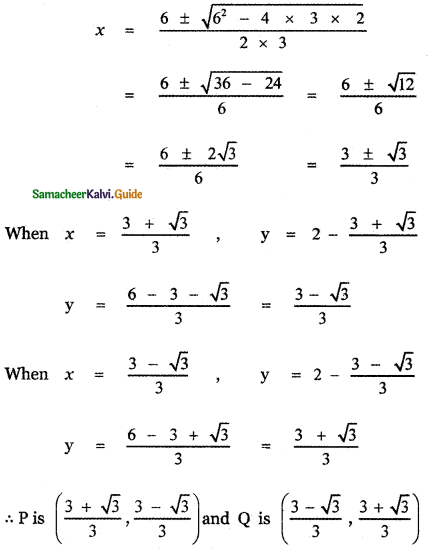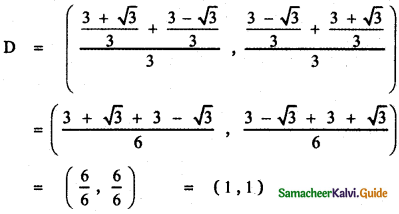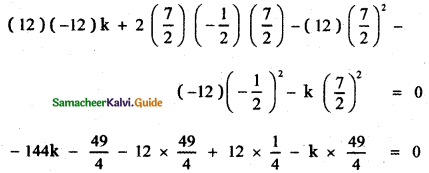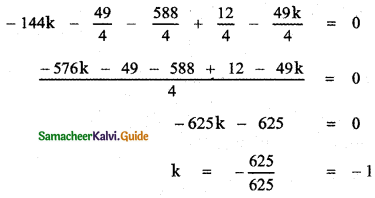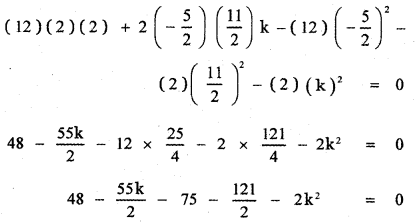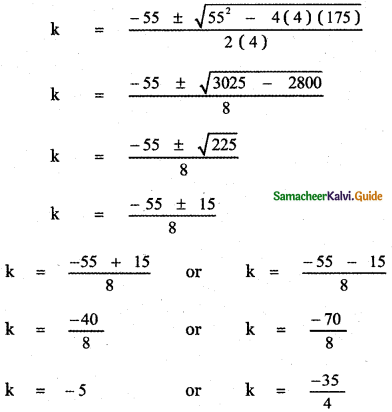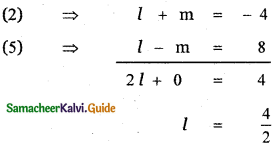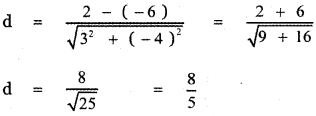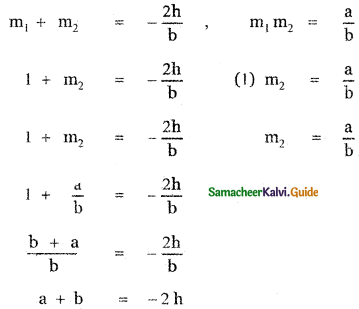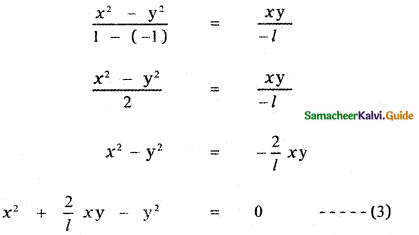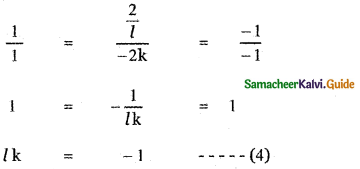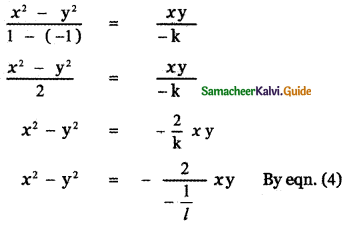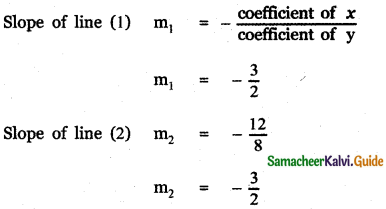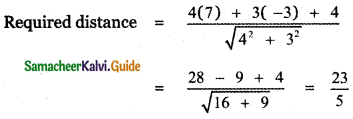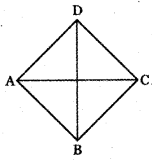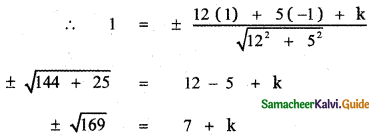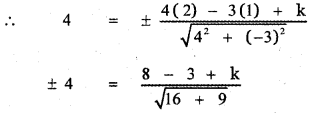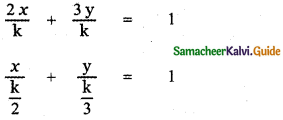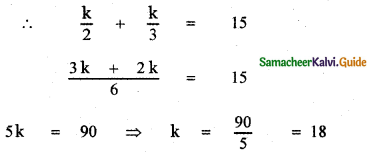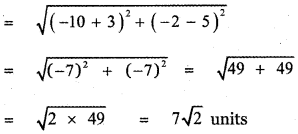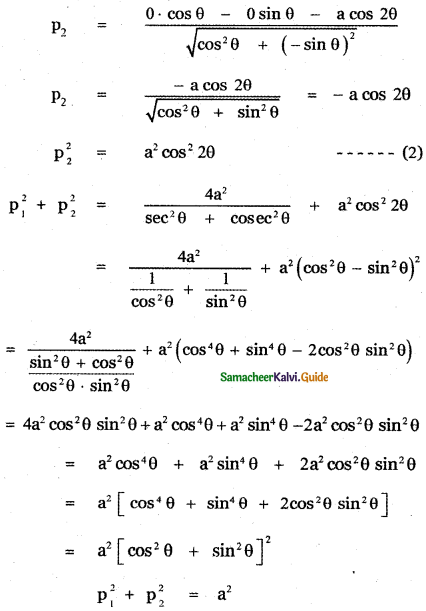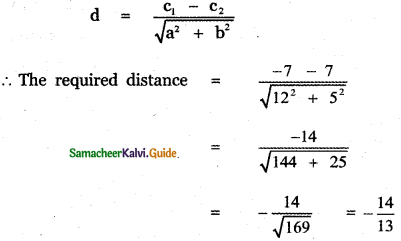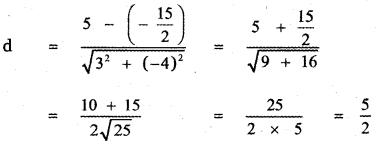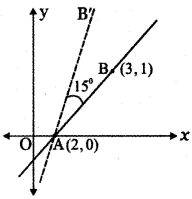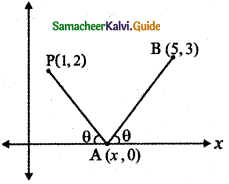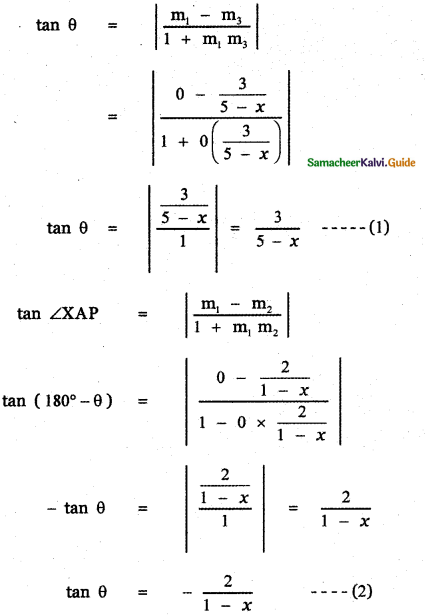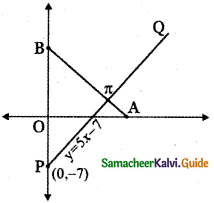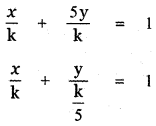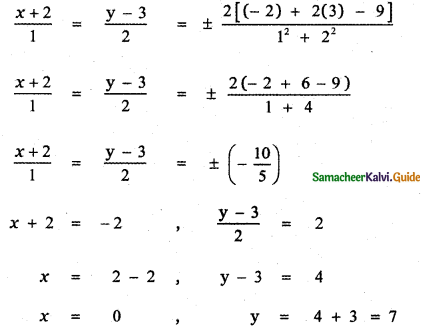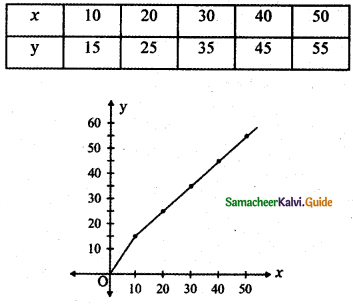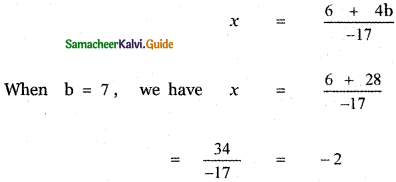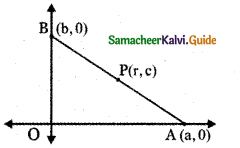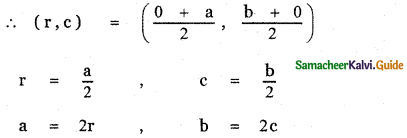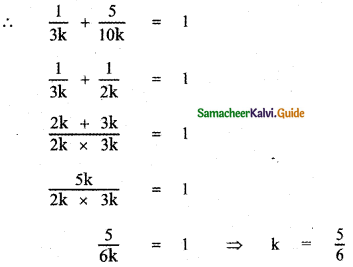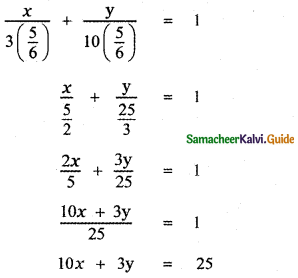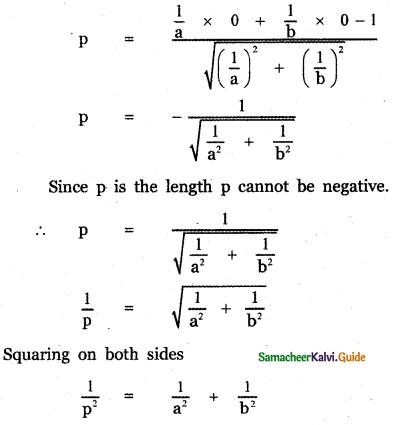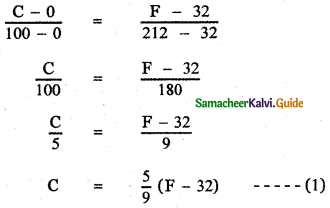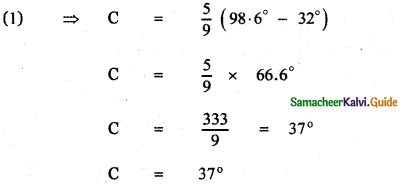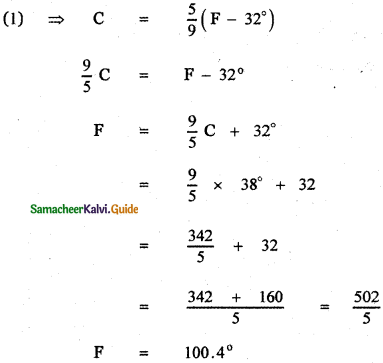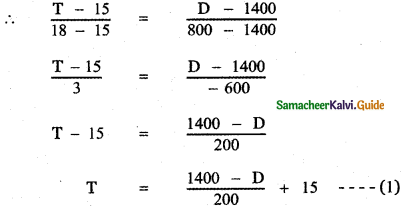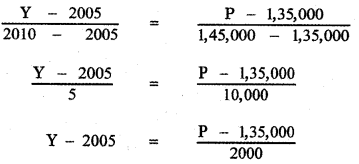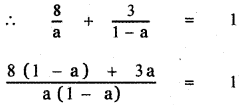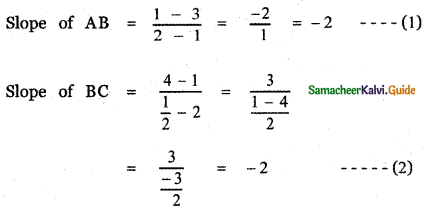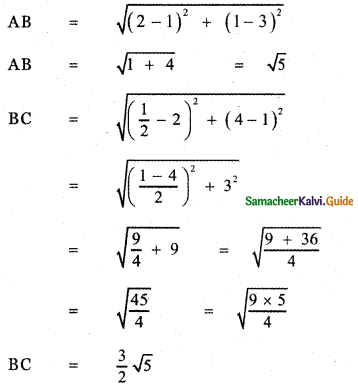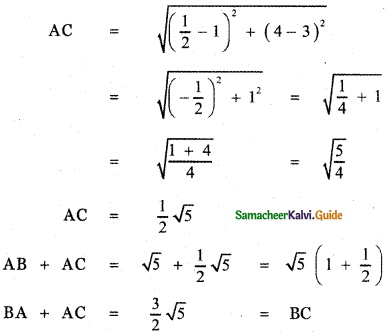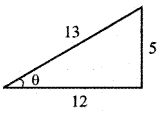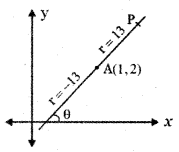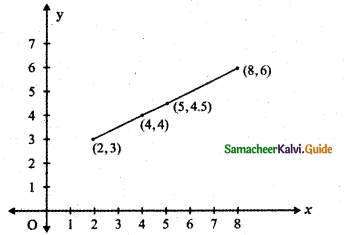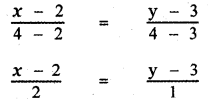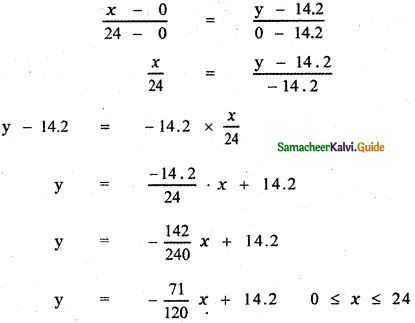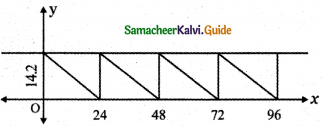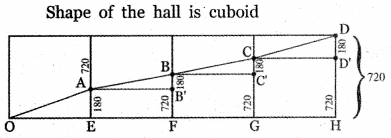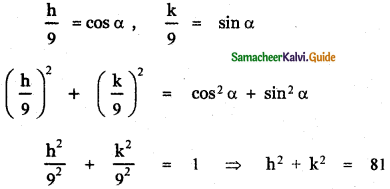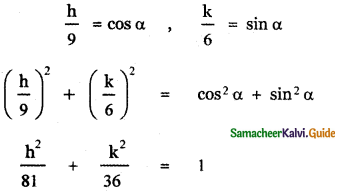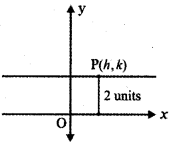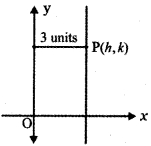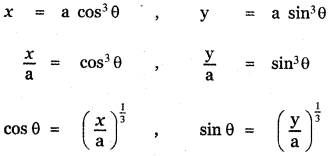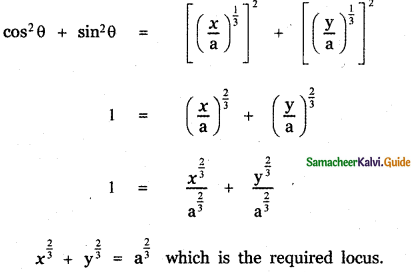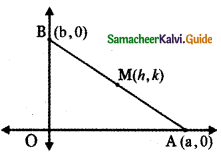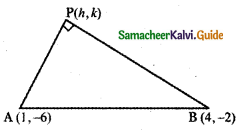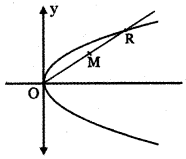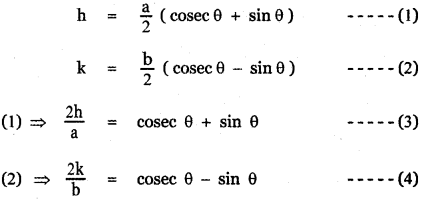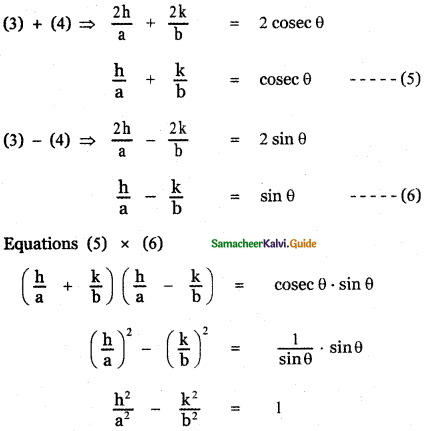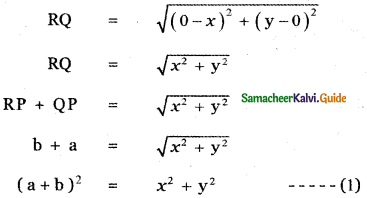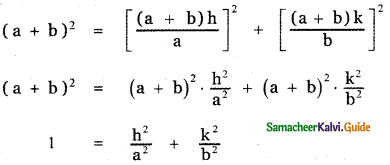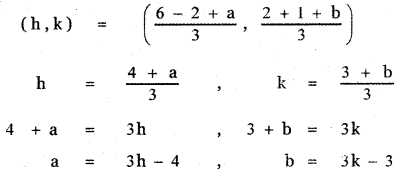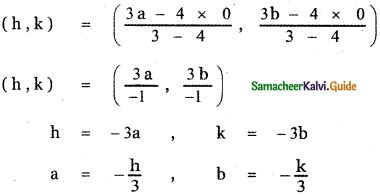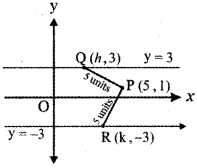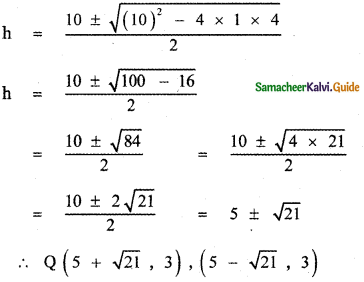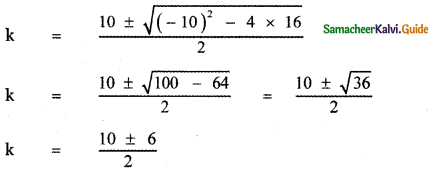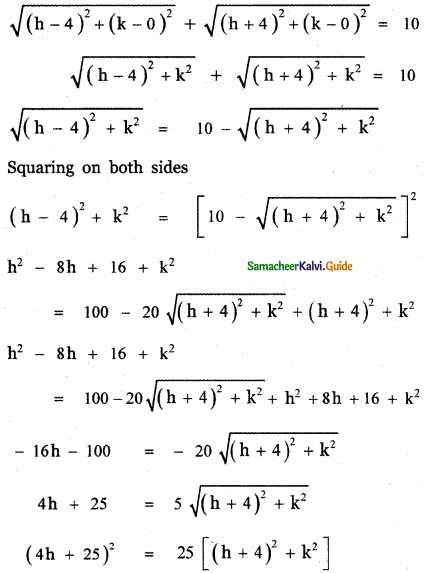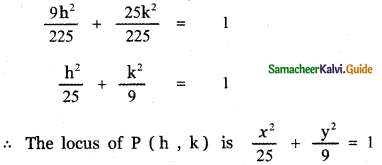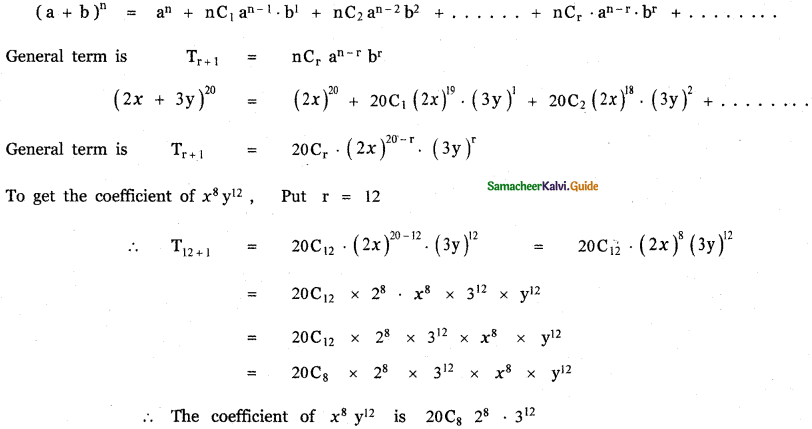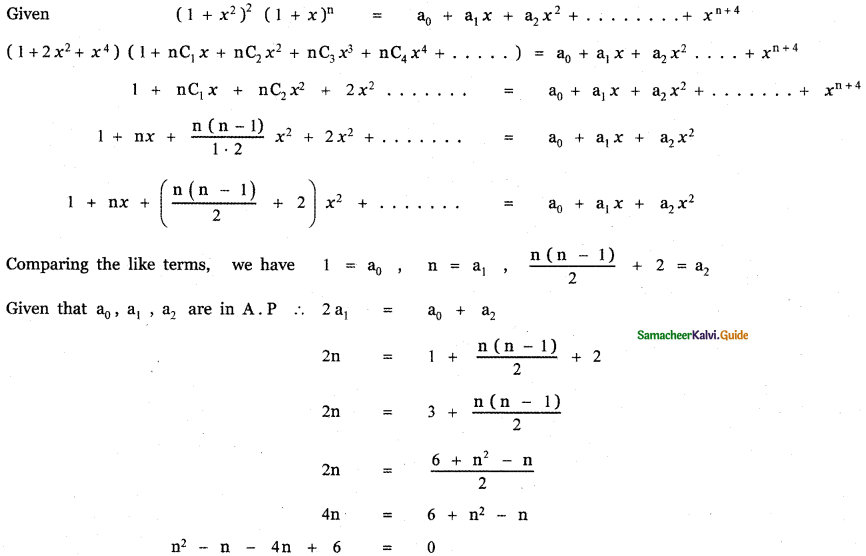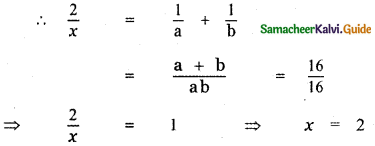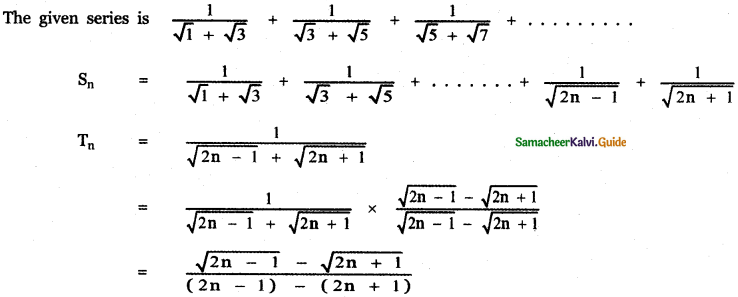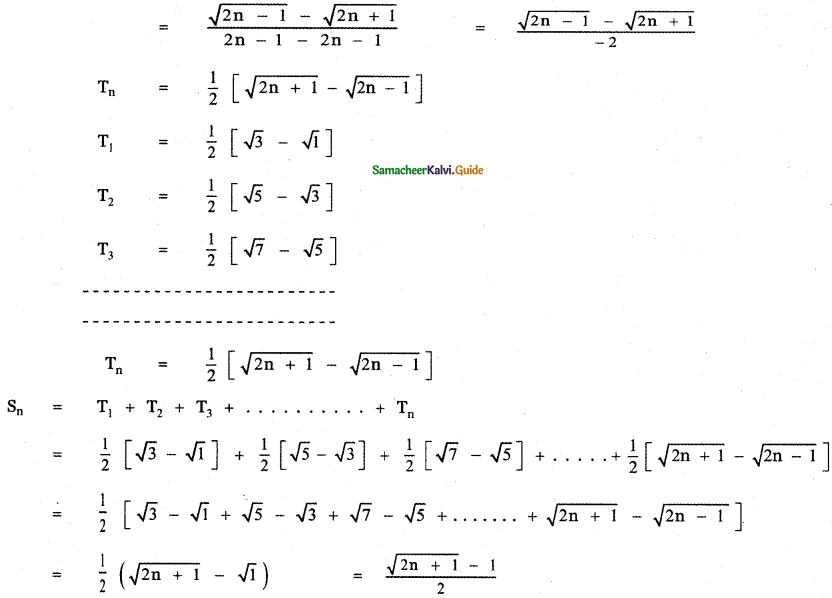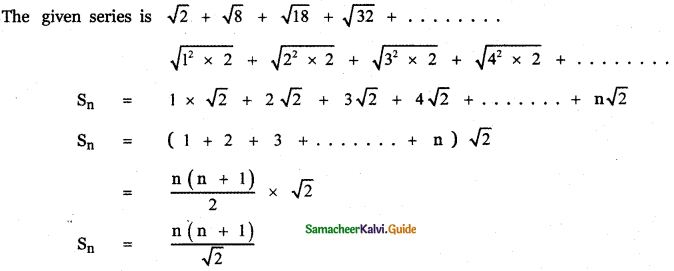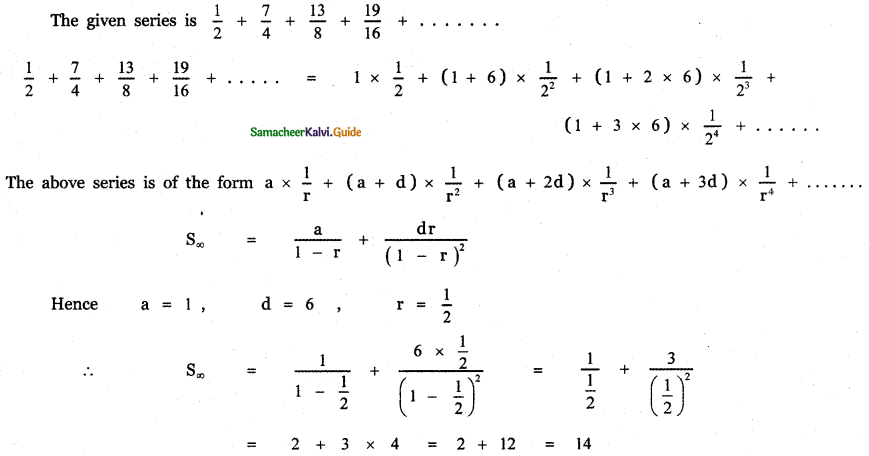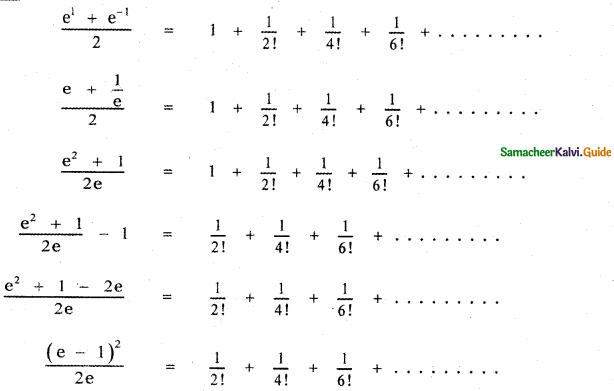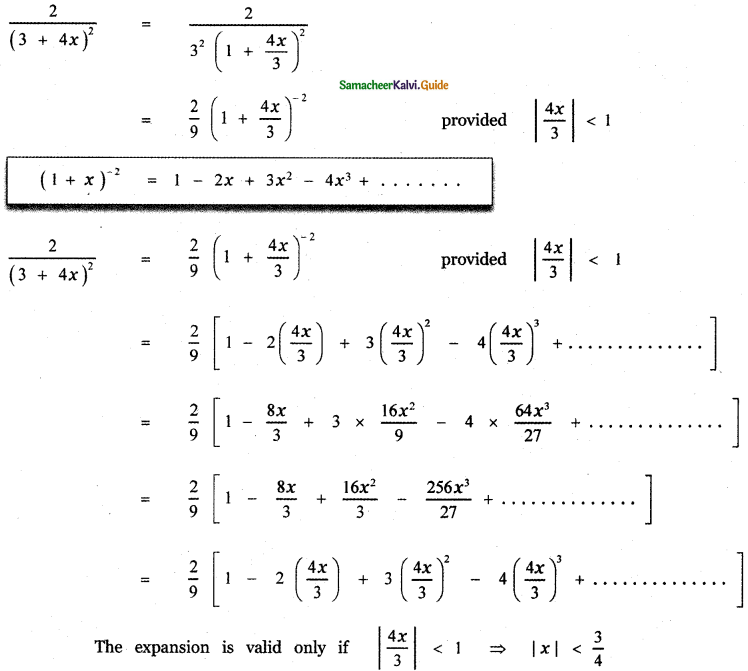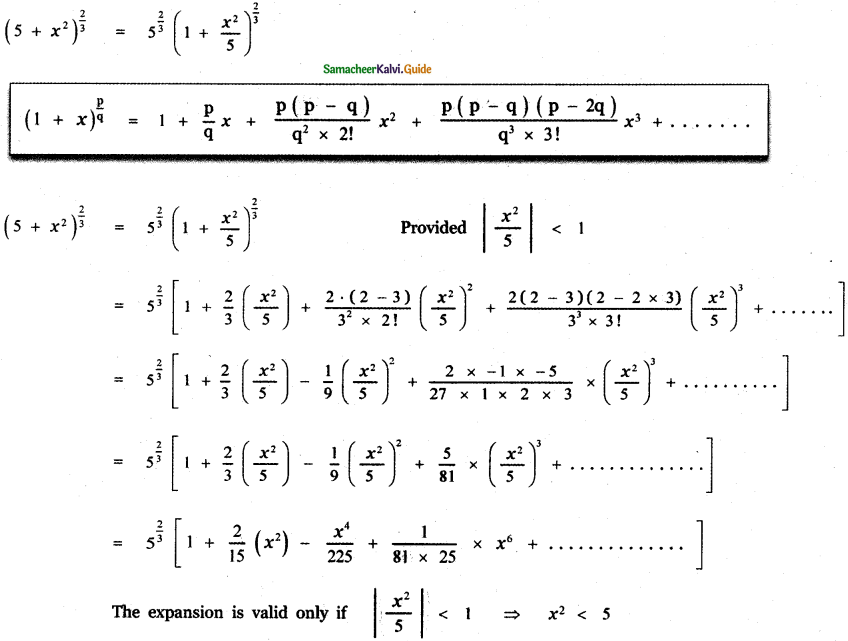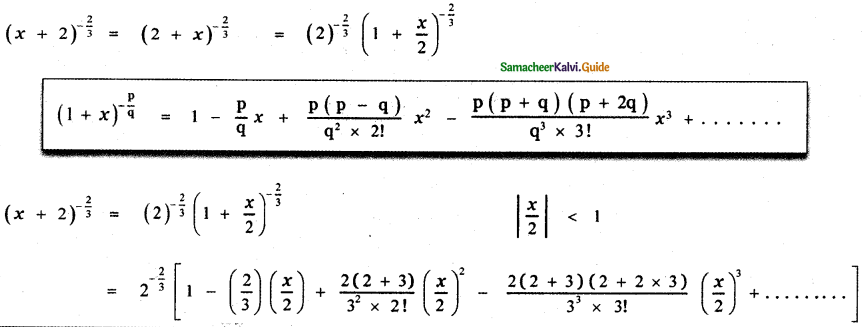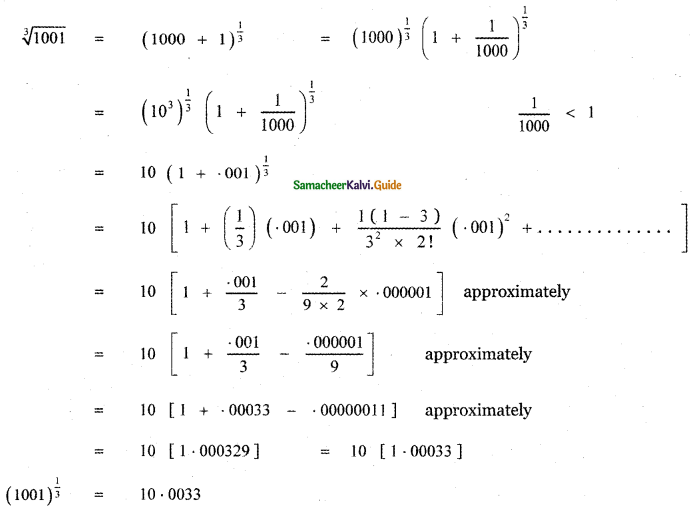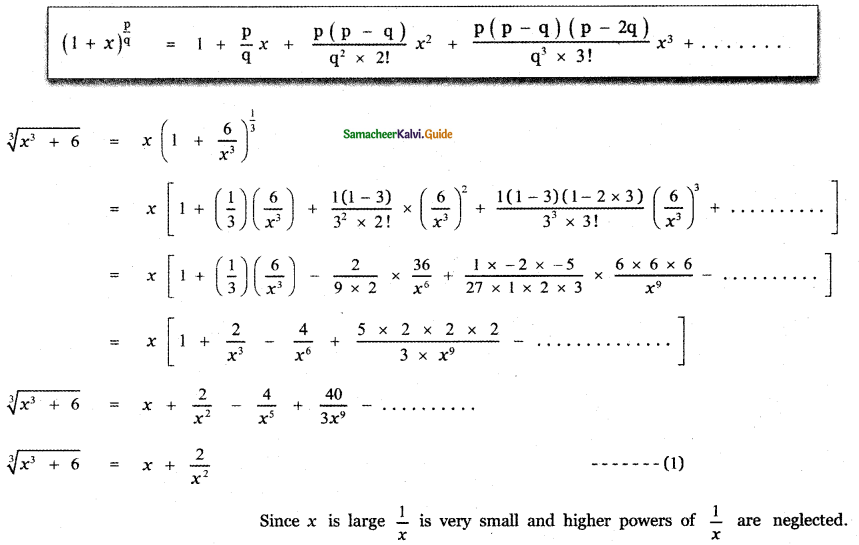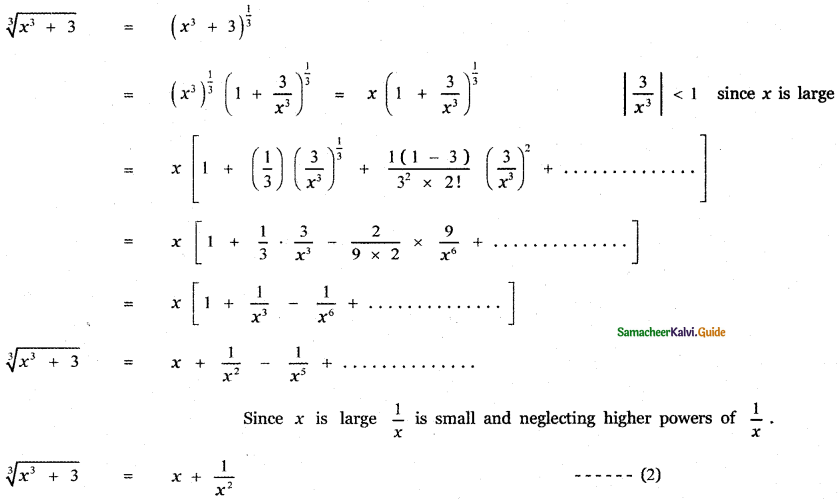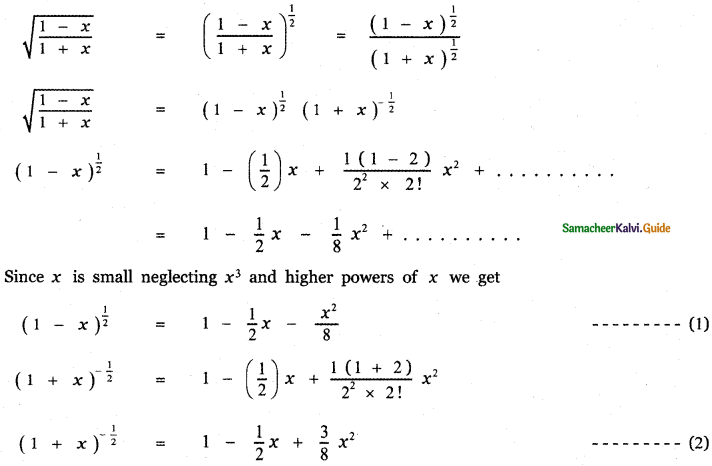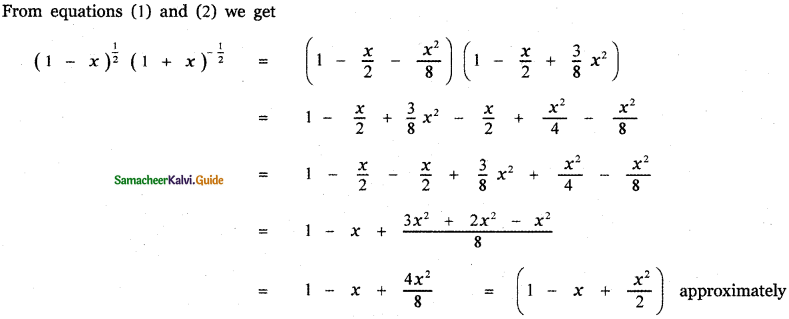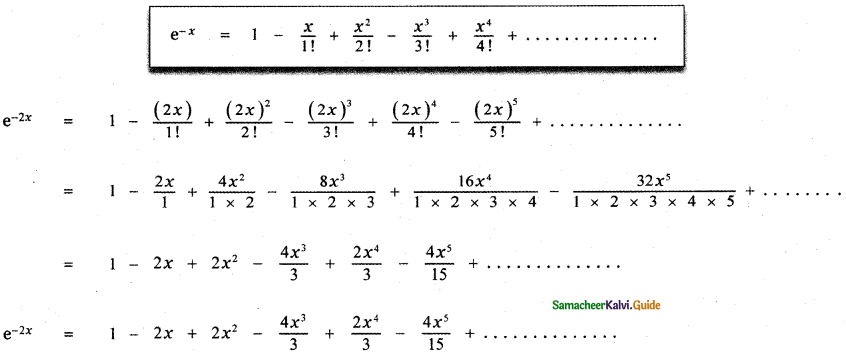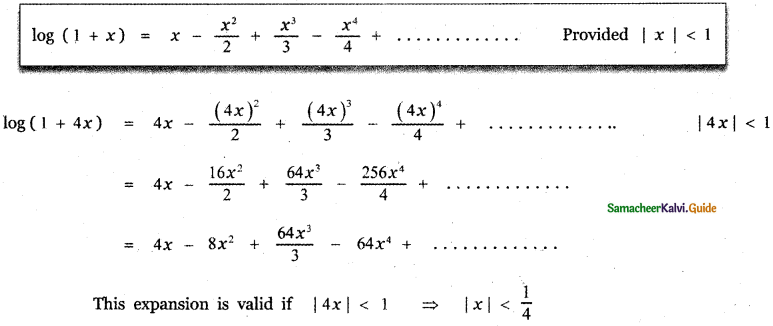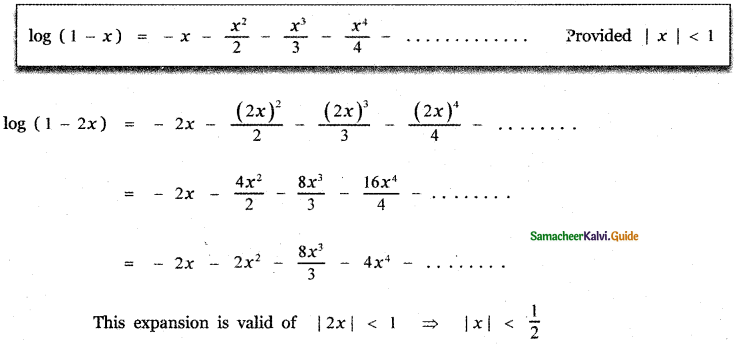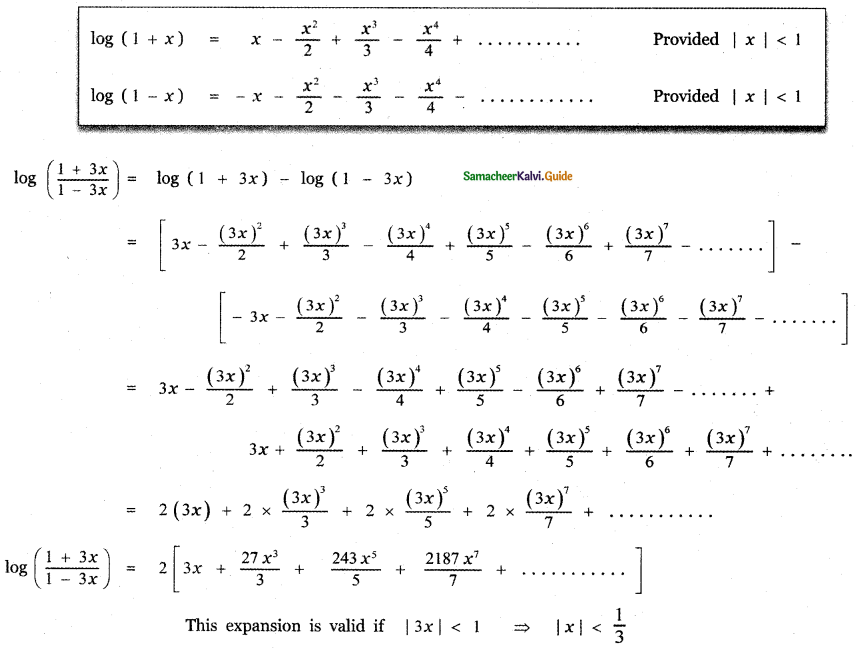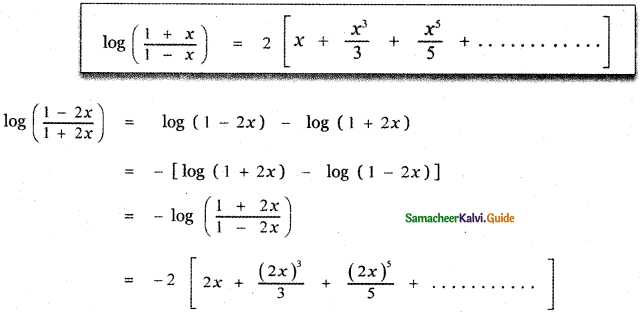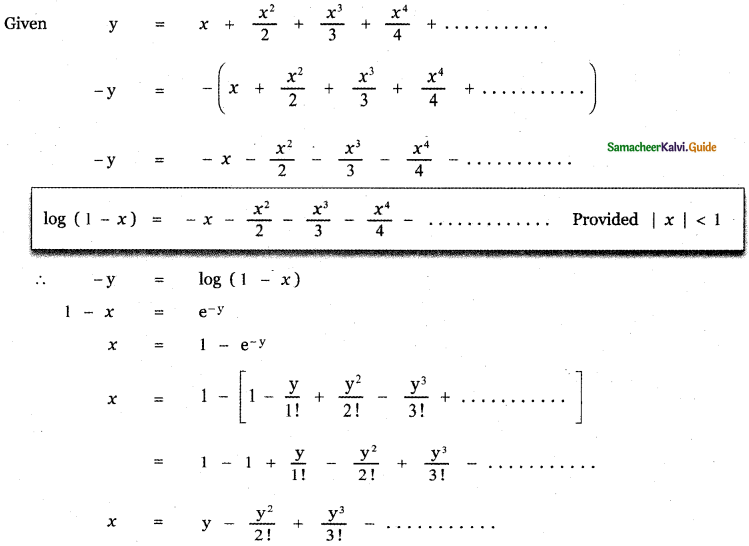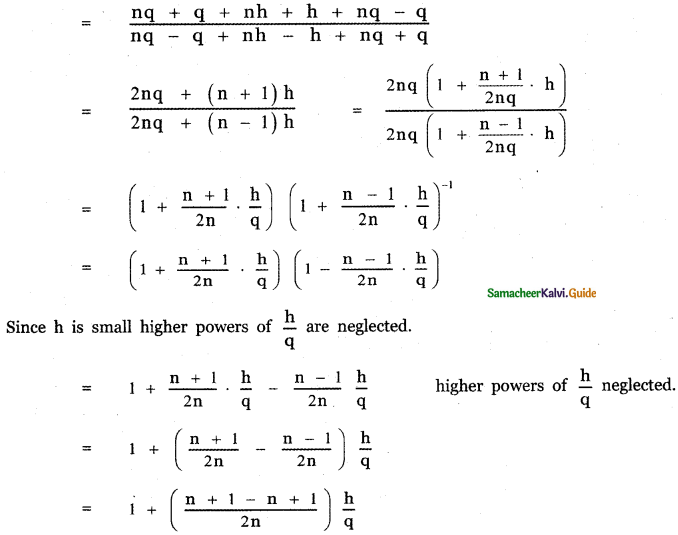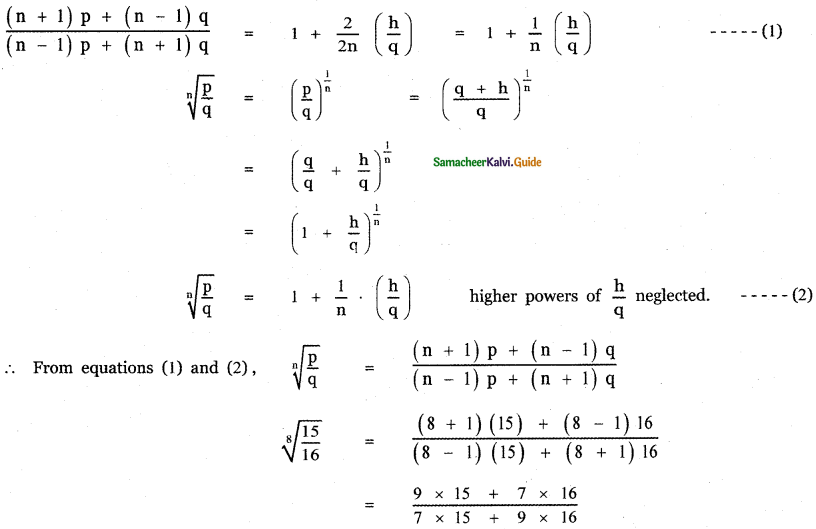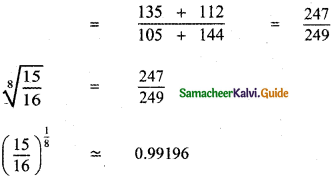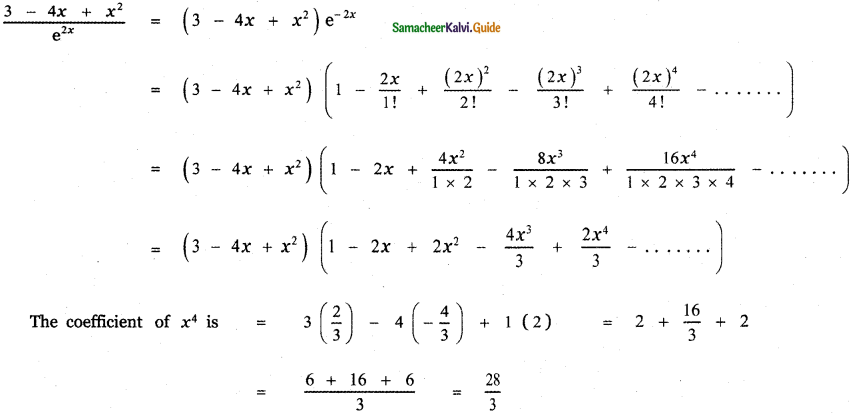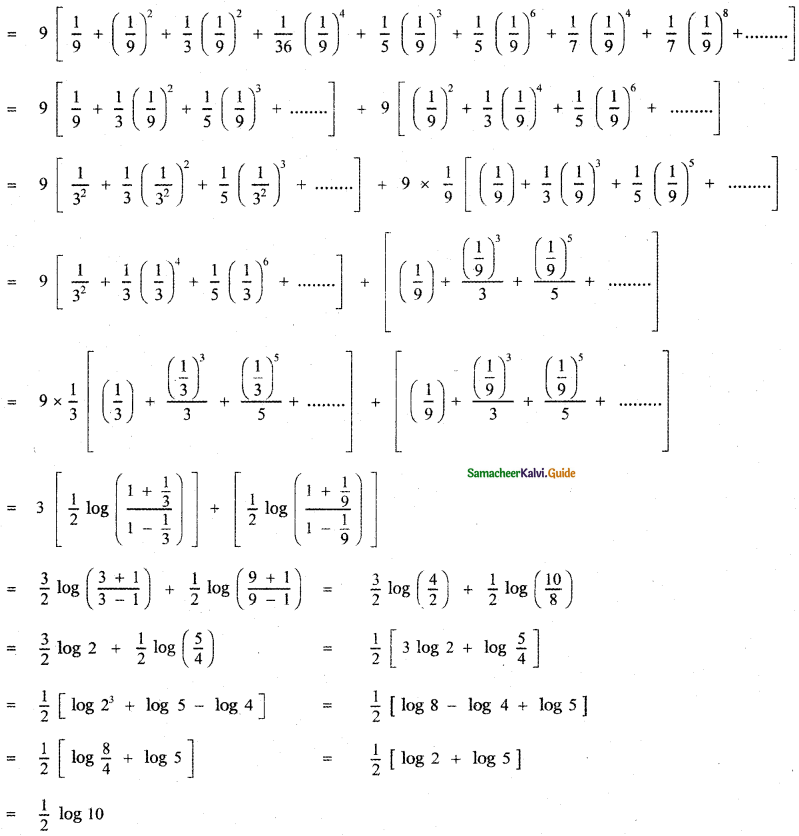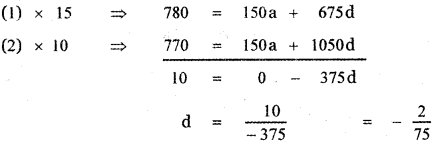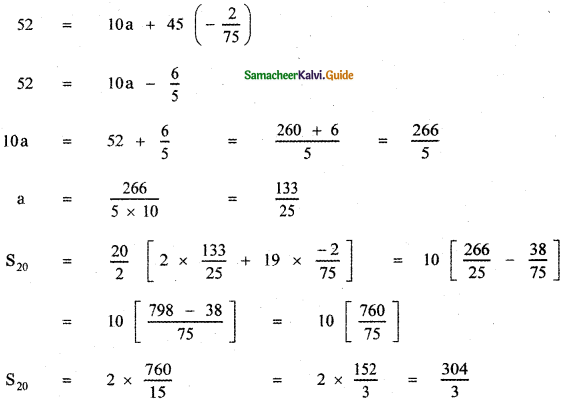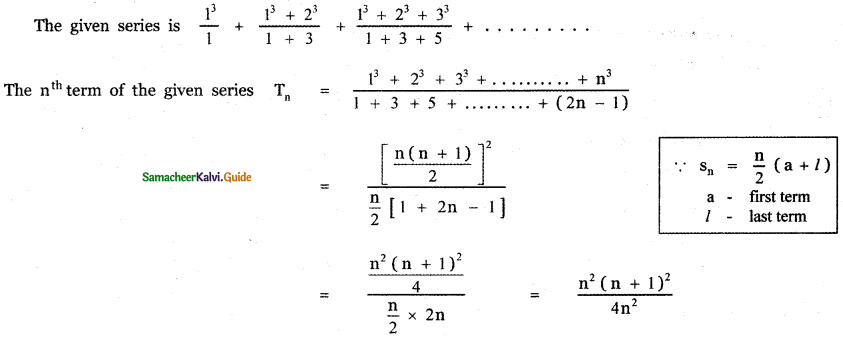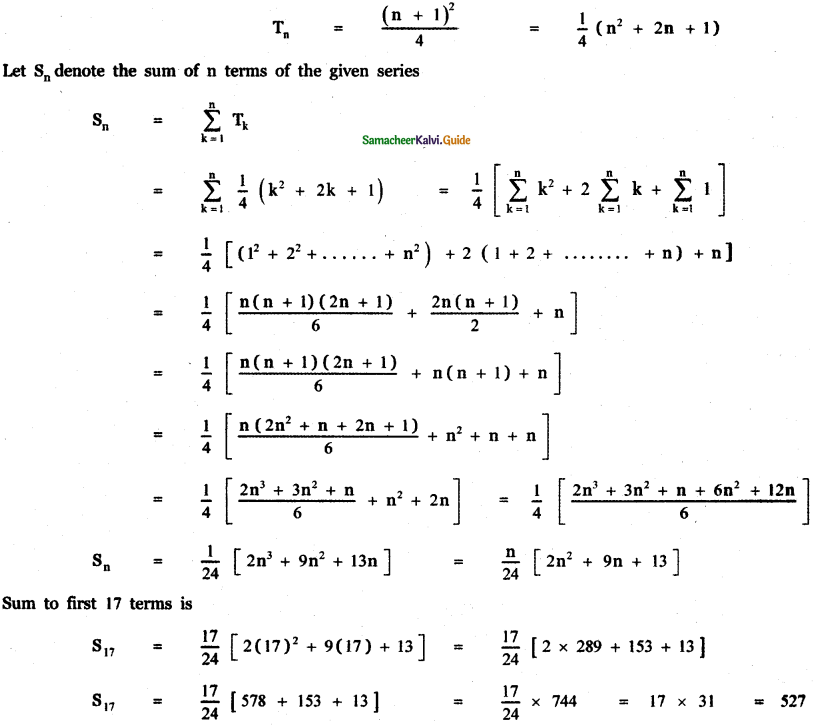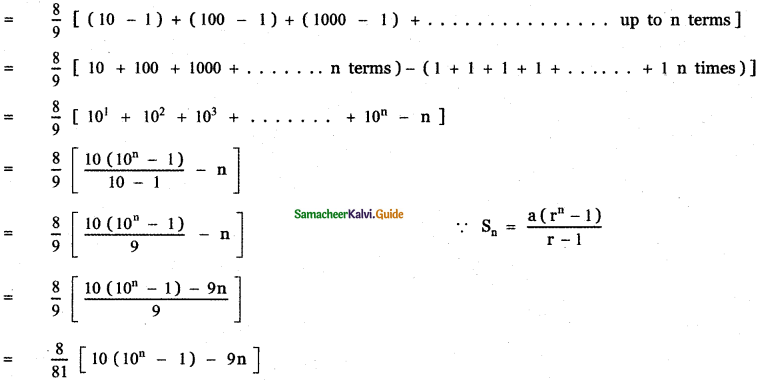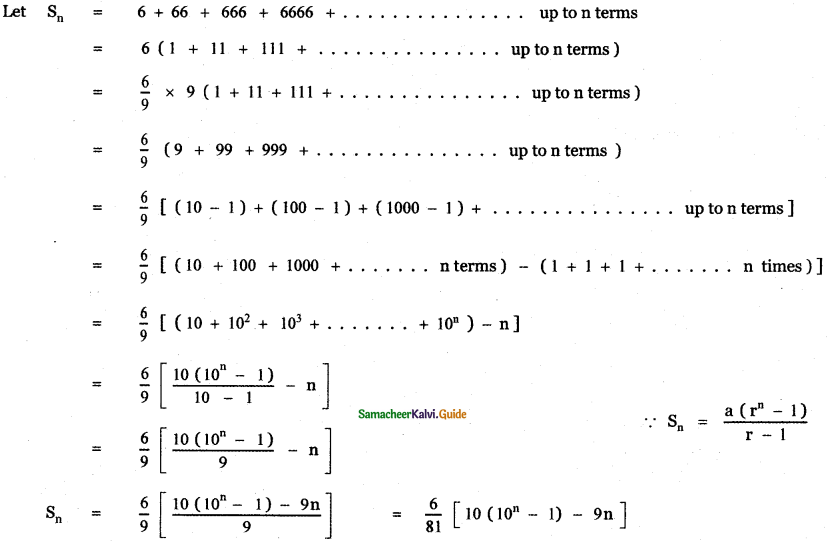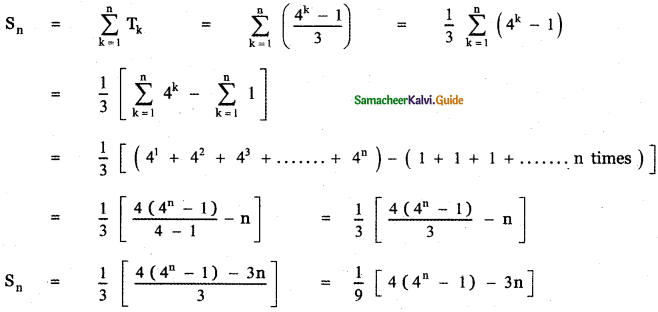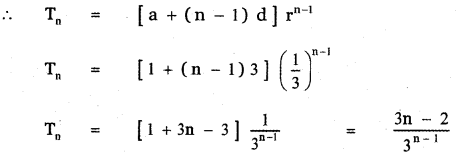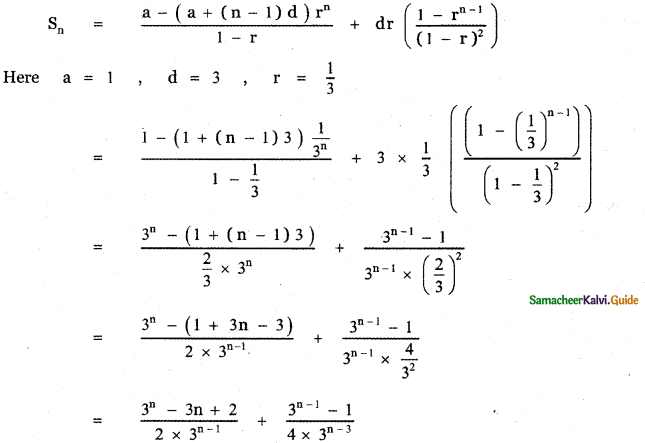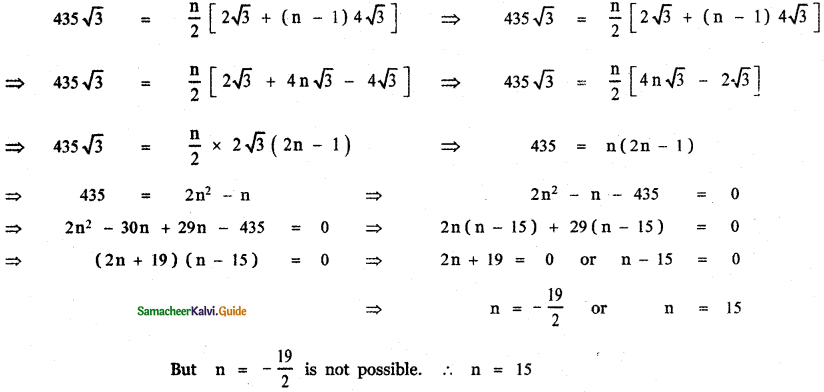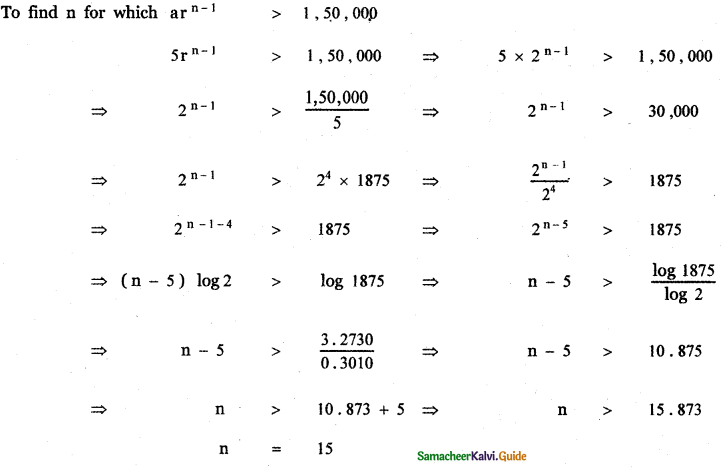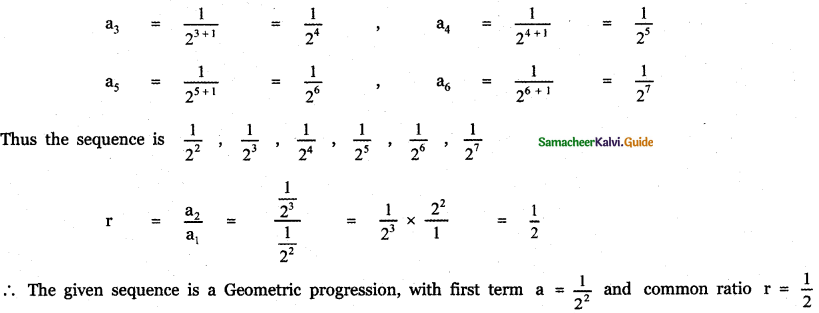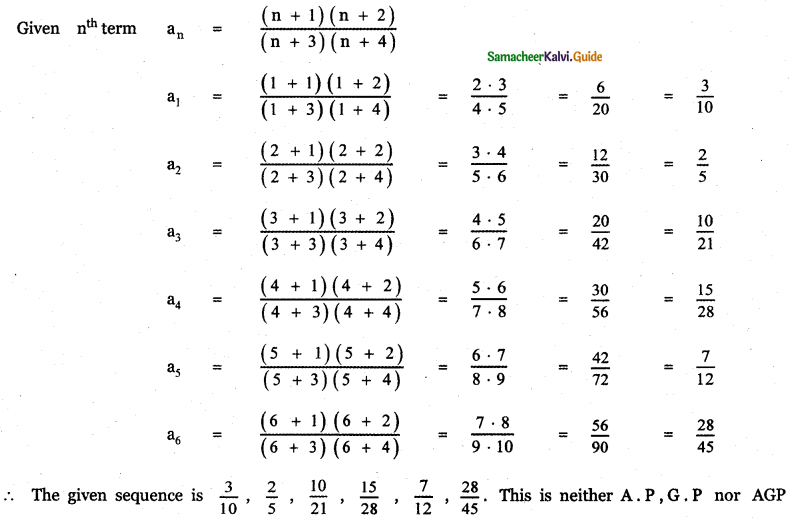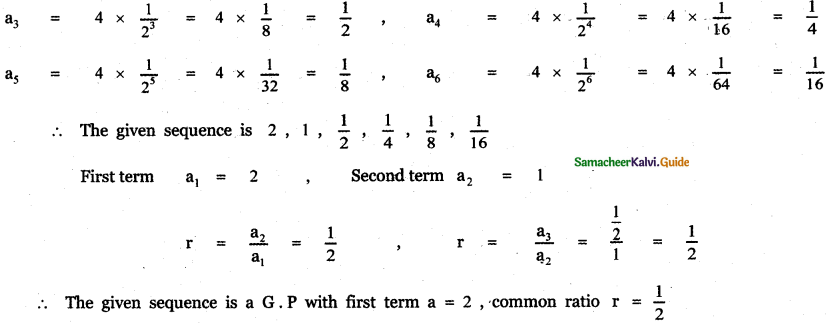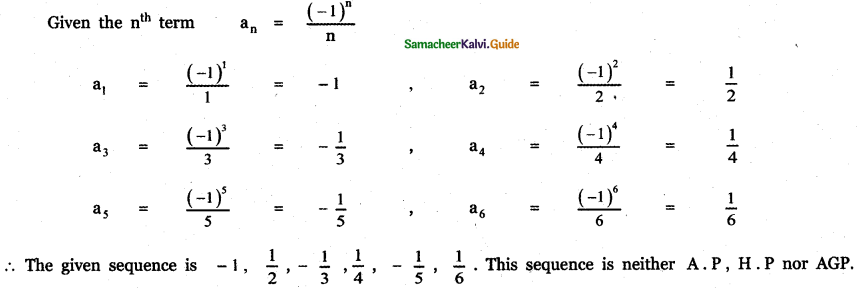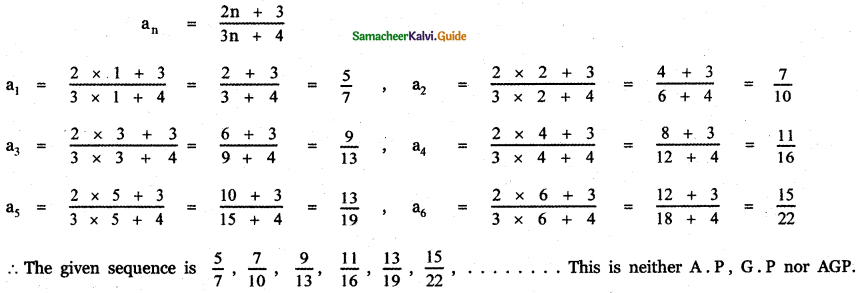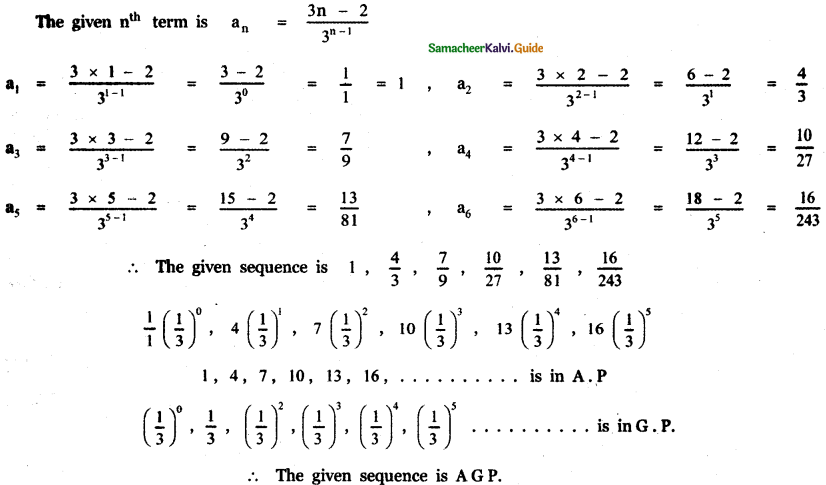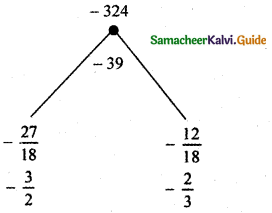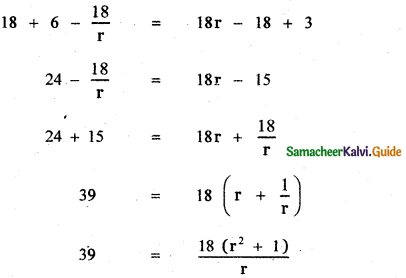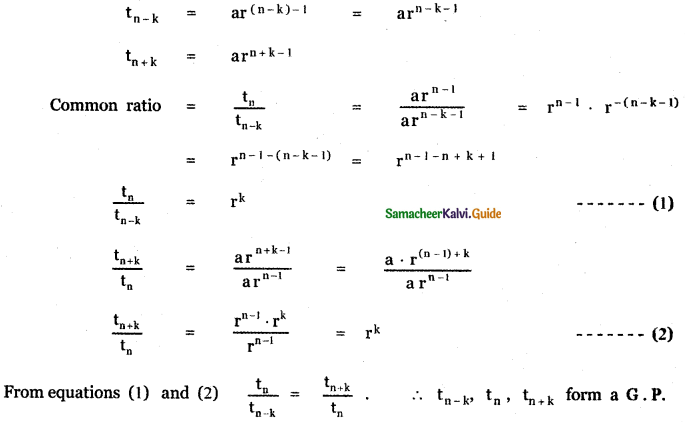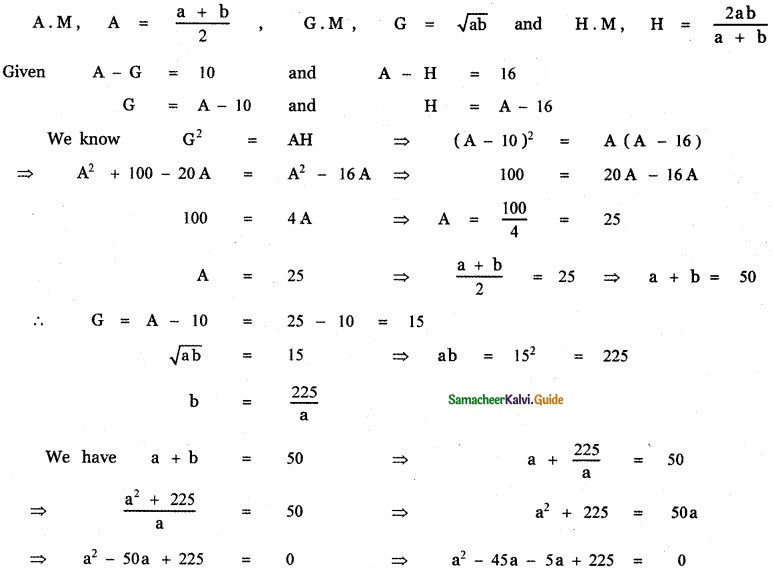Tamilnadu State Board New Syllabus Samacheer Kalvi 11th English Guide Pdf Prose Chapter 1 The Portrait of a Lady Text Book Back Questions and Answers, Summary, Notes.
Tamilnadu Samacheer Kalvi 11th English Solutions Prose Chapter 1 The Portrait of a Lady
11th English Guide The Portrait of a Lady Text Book Back Questions and Answers
Textual Questions:
1. Answer the following questions in one or two sentences based on your understanding of the story:
Question a.
Describe the grandfather as seen in the portrait.
Answer:
The author’s grandfather looked as if he were a hundred years old with lots of grandchildren. He had loose-fitting garments. He looked too old to have had a wife and children.
Question b.
Why was the author left with his grandmother in the village?
Answer:
The author’s parents went to the city to make a living. So he was left with his grandma till they settle well in the city.
Question c.
Where did the author study in his childhood?
Answer:
The author studied on the veranda of a village temple. He learned letters of the alphabet from the priest.
![]()
Question d.
Why did the grandmother accompany the author to school?
Answer:
The grandmother was pious. She accompanied the author to school as it was attached to the temple where she used to sit and read scriptures.
Question e.
What made the dogs follow the grandmother after school hours?
Answer:
Grandmother brought a bundle of stale chapattis with her to the temple. The village dogs followed her. On return, she went on throwing the chapattis to the dogs who growled and fought with each other to have a piece of chapatti.
Question f.
What was the happiest time of the day for their grandmother?
Answer:
The grandma spends half an hour in the afternoon feeding the sparrows. That was the happiest time of the day for grandma.
Question g.
Why didn’t the grandma feel sentimental when the author went abroad for higher education?
Answer:
Half an hour in the afternoon, grandma devoted her time to feeding sparrows. That half-an-hour was the happiest time of the day for grandmother.
![]()
2. Answer the following questions in three or four sentences each:
Question a.
Describe the author’s grandmother.
Answer:
The author s grandmother was short, fat, and slightly bent. She was like the winter landscape in the mountains, an expanse of pure white serenity breathing peace and contentment. She was religious, affectionate, and caring.
Question b.
What was the daily routine of the grandmother at home?
Answer:
Grandma started the mornings with a sing-song prayer. She woke up the author bathed and dressed him up and wanted him to learn the prayers by heart. Both would march to the school which was attached to a temple. She would stay inside chanting prayers and telling beads. In the evening, she would throw the stale chapattis to village dogs as they returned home.
Question c.
How is school education in the village different from that in the city?
Answer:
In the village school along with the teaching of subjects, there is the teaching of God and the scriptures, whereas city school concentrates more on western science and learning than with scriptures.
Question d.
The grandmother appreciated the value of education. Give instances in support of your answer.
Answer:
Grandma did have respect for education and that is why she personally monitored the village education of the author. She insisted on good manners and love for all living things. She demonstrated this by feeding village dogs and sparrows. She didn’t object to the author going abroad.
Question e.
The grandmother was strong-minded. Justify.
Answer:
When the author went abroad for his higher studies, She did not show her emotions. She had strong personal likes and dislikes. She was a woman of contentment.
Question f.
How did the grandmother spend the last few hours of her life?
Answer:
When she was in her death bed, she did not like to waste her time talking with the family members instead, She laid peacefully in bed praying and telling her beads.
![]()
3. Answer the following in a paragraph of 100 – 150 words each:
Question a.
The grandmother played a vital role in the author’s formative year. Give your own example of how elders have a positive influence on the younger generation. Include examples from the story also.
Answer:
The grandmother really played a vital role in moulding the author in his formative years. She was a good friend of the author during his childhood days. Like most other grandmothers she used to tell him many fables. She made the author get up early in the morning and listen to morning prayer. It was because of her the author inherited both moral and spiritual values.
Even in our day-to-day life, we have seen that there exist some basic differences in the character of children who are in a joint family with that of the children in a nuclear family. The elders in the joint family always have a positive influence over their grandchildren. There is no doubt that they act as the best guide and guardian of the younger generation.
Question b.
As young Khushwant Singh, write a letter to your parents describing your daily routine along with your thoughts and feelings about staying in the village.
Answer:
Dear dad,
I am fine. I feel extremely happy to share my thoughts and feelings of staying in the village with grandmother. First of all, I thank you so much for leaving me with grandma when you left for the city. Grandma is very affectionate towards me and I can’t leave her at any cost. She wakes me up early in the morning and makes me listen to her morning prayer. Though it is monotonous, I like listening to her voice. She makes me get ready for school and gives me chapattis for breakfast.
She accompanies me to school. On the way, we used to feed street dogs with stale chapattis which grandma carries with her daily. When we return from school those dogs follow us till we reach home. She also helps me in my studies. I am very much devoted to the love and affection which she shows to me. I like the atmosphere here and want to stay here for long. Hope you fulfill my wish.
Yours affectionately,
Khushwant Singh.
![]()
Question c.
Animals are capable of empathy. Substantiate this statement with examples from the story as well as your own experiences.
Answer:
Animals, which are considered not to have the sixth sense are far better than the human beings who have it. In fact the feeling of empathy is found more in animals than that in humans. In this story, we come to know that the grandmother develops a cordial relationship with the sparrows, whom she feeds daily with bread crumbs.
Those birds are also very affectionate towards her which we can understand by the way they sit on her shoulders, legs, and head. When grandmother died all the sparrows gathered there silently without any chirruping and they did not even touch the bread crumbs offered to them by the author’s mother.
When her corpse was taken away they all flew away silently. This clearly proves the fact that animals are really capable of empathy. The _ dogs which are tamed at home also possess the same feeling of empathy. We have heard of such incidents as where a dog dies just because it can’t tolerate the death of it’s owner.
Vocabulary:
3a. Read the following words and choose the correct antonyms from the options given:
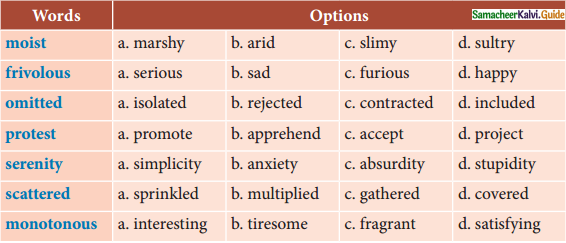
![]()
Question 1.
moist
(a) marshy
(b) arid
(c) slimy
(d) sultry
Answer:
(b. arid
Question 2.
frivolous
(a) serious
(b) sad
(c) furious
(d) happy
Answer:
(a) serious
Question 3.
omitted
(a) isolated
(b) rejected
(c) contracted
(d) included
Answer:
(d) included
Question 4.
protest
(a) promote
(b) apprehend
(c) accept
(d) project
Answer:
(c) accept
Question 5.
serenity
(a) simplicity
(b) anxiety
(c) absurdity
(d) stupidity
Answer:
(b) anxiety
Question 6.
scattered
(a) sprinkled
(b) multiplied
(c) gathered
(d) covered
Answer:
(c) gathered
Question 7.
monotonous
(a) interesting
(b) tiresome
(c) fragrant
(d) satisfying
Answer:
(a) interesting
![]()
Listening Activity:
Read the following statements and the given options. Now, listen to your teacher to read aloud a passage or play it on a recorder. You may listen to it again if required, to help you choose the right options:
Question i.
According to Napoleon ‘Good mothers make good ________.
a) housewives
b)jobs
c) nations
d)ideas
Answer:
c) nations
Question ii.
Mothers exhibit _______ love.
a) unauthorized
b) unapproved
c) unacceptable
d) unconditional
Answer:
d) unconditional
Question iii.
_______ mothers care much for their children.
a) Adapted
b) Adopted
c) Adoptive
d) Adaptable
Answer:
c) Adoptive
Question iv.
_______ is the most important thing in the world.
a) Wealth
b) Power
c) Love
d) Influence
Answer:
c) Love
Question v.
Love should be extended to _______ too.
a) friends
b) relatives
c) countrymen
d) creatures
Answer:
d) creatures
![]()
Reading:
Read the passage on ‘Laughter Therapy’ and answer the questions that follow:
1. Laughing is an excellent way to reduce stress in our lives; it can help you to cope with and survive a stressful life. Laughter provides full-scale support for your muscles and unleashes a rush of stress-busting endorphins. Since our body cannot distinguish between real and fake laughter, anything that makes you giggle will have a positive impact.
2. Laughter Therapy aims to get people laughing, in groups and individual sessions and can help reduce stress, make people and employees happier and more committed, as well as improve their interpersonal skills. This laughter comes from the body and not the mind.
3. Laughter Yoga (Hasya Yoga) is a practice involving prolonged voluntary laughter. It aims to get people laughing
in groups. It is practiced in the early mornings in open-parks. It has been made developed by Indian physician Madan Kataria, who writes about the practice in his 2002 book ‘Laugh for no reason. Laughter Yoga is based on the belief that voluntary laughter provides the same physiological as well as psychological benefits as spontaneous laughter.
4. Laughter yoga sessions may start with gentle warm-up techniques which include stretching, chanting, clapping, eye contact, and body movements to help break down inhibitions and encourage a sense of playfulness. Moreover, laughter is the best medicine. Breathing exercises are used to prepare the lungs for laughter followed by a series of laughter exercises that combine a method of acting and visualization techniques. Twenty minutes of laughter is sufficient to augment physiological development.
5. A handful of small scale scientific studies have indicated that laughter yoga has some medically beneficial effects, including cardiovascular health and mood. This therapy has proved to be good for depressed patients. Laughter therapy also plays a crucial role in social bonding.

Question a.
How does laughter help one to cope with stress?
Answer:
Laughter provides full-scale support for our muscles and unleashes a rush of stress-busting endorphins.
Question b.
Which word in the text (para 2) means the same as ‘dedicated’?
Answer:
Committed
Question c.
Why do you think voluntary laughter provides the same physiological as well as psychological benefits as spontaneous laughter?
Answer:
Our body cannot distinguish between real and fake laughter. Anything that makes us giggle will have a positive impact.
Question d.
‘Laughter is the best medicine’ explains.
Answer:
Laughter improves cardiovascular health and mood. It is also good for depressed patients.
Question e.
Given below is a set of activities. Which of these are followed in the ‘Laughter Yoga’ technique?
- sitting on the ground with legs crossed
- body movements
- clapping
- closed eyes
- breathing exercises
- chanting
- stretching of arms and legs
- bending backwards
- running/jogging
- eye contact
Answer:
- Clapping
- Breathing
- Exercises
- Bending backward
- Stretching of arms and legs
Question f.
‘Laughter therapy also plays a crucial role in social bonding How?
Answer:
When people sit together in laughter there develops a good or cordial relationship among them which improves their social bonding.
![]()
ஆசிரியரைப் பற்றி:
குஷ்வந்த் சிங் ஒரு இந்திய நாவலாசிரியர் மற்றும் வழக்கறிஞர். இவர் டெல்லியில் உள்ள புனித ஸ்டீஃபன்ஸ் கல்லூரியிலும் லண்டனில் உள்ள கிங்ஸ் கல்லூரியிலும் கல்வி பயின்றார். இவர் மத்திய அரசின் வெளியுறவுத்துறை பணியில் 1947ம் ஆண்டு சேர்ந்தார்.
இவர் சிறந்த எழுத்தாளராக சிறந்துவிளங்கியதோடு, மதச்சார்பின்மை , விமர்சனம் (நையாண்டி), கவிதை ஆகியவற்றால் புகழ் பெற்றார். 1974ல் இவருக்கு பத்ம விபூஷன் விருதும், 2007ல் சாகித்ய அகாடமி விருதும் இவரின் இலக்கிய பணிகளுக்காக வழங்கப்பட்டது, “விஷ்னுவின் அடையாளம்,” “சீக்கியர்களின் வரலாறு,” ”பாக்கிஸ்தானுக்குச்செல்லும் ரயில்” மேலும் பல இவரின் படைப்புகள் ஆகும்.
![]()
பாடத்தைப் பற்றி:
இந்த பாடத்தில் கொடுக்கப்பட்டுள்ள கதை ஆசிரியருக்கும் (குஷ்வன் சிங்) அவருடைய அன்பான பாட்டிக்கும் இடையிலான பாச பிணைப்பை வெளிக்காட்டுகிறது. வயதான பாட்டி சிறுவனாக இருக்கும் ஆசிரியரை உருவாக்குவதில் காட்டும் அக்கரையை எடுத்துக் காட்டுகிறது. பாட்டிக்கும் சிறுவனுக்கும் இடையில் உள்ள உறவை பார்க்கும் போது மெய்சிலிர்கிறது. பாட்டி முழுக்க முழுக்க பக்திமயமானவர். தன்னுடைய பேரனையும் பக்தியிலும், ஒழுக்கத்திலும் சிறந்தவனாக வளர்க்கிறார். பாட்டி அதிகம் படிக்கவில்லை என்றாலும் அவள் தன் பேரனுக்கு ஓர் சிறந்த ஆசிரியைதான்.
மனிதர்களுக்கு மட்டுமல்லாது விலங்குகளுக்கும் (நாய்), (சிட்டுக்குருவி) பறவைகளுக்கும் உணவழித்து மகிழ்கிறாள். இதைபோன்ற அன்புறவு நாம் நம் பாட்டிகளிடத்திலும் கண்டிருக்கலாம். ஆனால் இத்தலைமுறையினரிடம் இருக்கிறதா? என்றால் கேள்விக்குறிதான். பாட்டி இறக்கும் பொது கூறப்படும் செய்தியை நாம் வாசிக்கும் போது நம்மை அறியாமலே நமக்கு கண்ணீர் வருகிறது. இக்கதையை நாம் முழுமைாக படித்து பாட்டியின் அன்பை புரிந்து கொள்வோம்.
![]()
The Portrait of a Lady Summary in Tamil
எனது பாட்டி அனைவரது பாட்டியைப்போல் வயதான பெண்மணி. சுமார் இருபது ஆண்டுகளாய் முதிர்ந்த வயதுடையவளாகவும் சுருங்கிய கண்ணங்களோடும் அவளைப் பார்க்கிறேன். என் சுற்றத்தார் அனைவரும் என் பாட்டி இளமையில் அழகாகவும், (Pretty) இளமையாகவும், (Young) அவருக்கும் கணவர் இருந்தார் எனவும் கூறுவார்கள். அது எனக்கு வியப்பாக இருந்தது. எங்கள் வீட்டின் ஓவிய அறையின் (வரவேற்பு அறை) (Drawing room) மேலே என் தாத்தாவின் புகைப்படம் தொடங்கவிடப்பட்டிருந்தது. அதில் அவர் மிகப்பெரிய தலைப்பாகையும், தளர் ஆடையும் அணிந்திருந்தார்.
அவரின் நீளமான வெண்மை தாடி அவரின் மார்பகம் மறையும் அளவிற்கு இருந்தது, அவரை பார்பதற்கு மனைவி குழந்தைகள் இருப்பவராக மட்டமில்லாமல் அதிகமாக பேரன் பேத்திகளை கொண்டவர் போலும் காணப்பட்டார். எங்கள் பாட்டி அடிக்கடி தான் சிறுவயதில் விளையாடிய விளையாட்டைப் பற்றி எங்களிடம் கூறுவாள். அது அவள் மேல் அபத்தமான மற்றும் மதிப்பிழக்க (Undignified) செய்யும் அளவில் இருந்தாலும் அதை நாங்கள் இறைதூதர் (Prophets) சொல்லும் நீதிக்கதை (Fables) போல் எண்ணிக்கொள்வோம்.
அவள் குள்ளமாகவும் (Short) சாய்வாகவும் (Bent) நடப்பாள். அவள் முகத்தில் எங்கேயும் குறுக்குவெட்டுக் கோடுகளாலான (criss – cross) சுருக்கங்கள் இருக்கும். நாங்கள் அறிந்ததிலிருந்து முதுமை நிலையில், மிகவும் முதுமையான நிலையில் சுமார் இருபது ஆண்டுகள் இருக்கிறாள். அவள் அழகாக இல்லை என்றாலும் அவள் அழகு தான்.
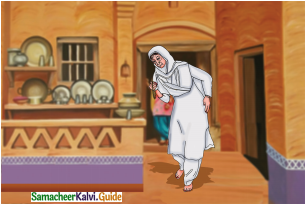
ஒரு கையை கால்களுக்கு ஊன்றுகோளாகவும் மற்றொரு கையில் ஜெபமாலையும் வைத்துக்கொண்டு சிரமப்பட்டு நடப்பாள் (hobbled). வெள்ளியை போன்று முடிகள் அவளது சுருங்கிய முகத்தில் விழுந்து கிடக்கும், அவளது உதடுகள் மௌன ஜெபங்கள் பொழியும் (inaudible). ஆம் அவள் அழகுதான். பனிக்காலத்தில் தோன்றும் இயற்கை பரப்பரப்பு காட்சிபோல் விரிந்து (expanses) அமைதியான சமாதான மனநிறைவுடன் இருப்பாள்.
![]()
நானும் எனது பாட்டியும் நல்ல நண்பர்கள். என் பெற்றோர்கள் என்னை என் பாட்டியுடன் விட்டுவிட்டு நகர்ப்புறத்திற்கு சென்றார்கள். என்னை தினமும் காலையில் எழுப்பி பள்ளிக்கூடத்திற்கு புறப்பட செய்வாள். காலையில் என்னை குழிக்க வைக்கும் போதே மாறுபாடின்றி (monotonous) ஜெப கீதங்கள் படிப்பாள். அவை அனைத்தும் நான் என் இதயத்தால் அறிந்து உணர்வேன் என்ற நம்பிக்கையில் பாடுவாள். அவளின் இனிமையான குரலுக்கு நானும் அடிமை.
ஆனால் அவற்றை கற்க முற்கொள்ளமாட்டேன். பின் மரத்தாலான என்னுடைய சிலேட்டை (slate) நன்று துடைத்து அதனுடன் மஞ்சள் வண்ண எழுதுகோல், சிவப்பு பேனா அனைத்தையும் ஒரு கொத்தாக சேர்த்து என்னிடம் கொடுப்பாள். காய்ந்த ரொட்டியில் (சப்பாத்தி) வெண்ணை தடவி சர்க்கரையைத் தூவி காலை உணவை முடித்துவிட்டு நாங்கள் பள்ளிக்கு செல்வோம். அதிகமான காய்ந்த ரொட்டிகளை கிராமத்தில் உள்ள நாய்களுக்கு போட கையில் எடுத்துக் கொண்டு வருவாள்.
பள்ளிக்கூடத்திற்கு அருகே கோவில் இருப்பதால் என் பாட்டி என்னுடனே பள்ளிக்கு வருவாள். புரோகிதர் (பூசாரி – Priest) எங்களுக்கு காலை ஜெபங்கள் மற்றும் ஸ்லோகங்கள் சொல்லித் தருவார்.குழந்தைகள் வரிசையாக அமர்ந்து ஸ்லோகங்கள் சொல்லும்போது என் பாட்டி உள்ளே அமர்ந்து சமயத் திரு நூல்களை வாசிப்பாள்.
அனைத்து வேலைகளையும் முடித்தப் பிறகு இருவரும் சேர்ந்து வீட்டுக்கு செல்வோம். அந்த நேரத்தில் எங்கள் கிராமத்து நாய்க்குட்டிகள் நாங்கள் போட்ட ரொட்டிகைளை தின்றுக்கொண்டு எங்கள் பின்னால் சண்டைப் போட்டுக்கொண்டும், விளையாடிக் கொண்டும் வரும்.
எனது பெற்றோர் நகர்ப்புறத்தில் குடியேறியப் பிறகு எங்களையும் அழைத்துச் சென்றார்கள். அது எங்கள் தோழமைக்கு திருப்பு முனையாக இருந்தது. ஒரே அறையை நாங்கள் பகிர்ந்து கொண்டாலும், என்னுடன் என் பாட்டி பள்ளிக்கு வர இயலவில்லை. நானும் பள்ளிக்கு விசைப்பேருந்தில் (Motorbus) செல்வேன். தெருவில் நாய்களுக்கு உணவு அளிக்க முடியாததால் மொட்டை மாடியில் (Courtyard) குருவிகளுக்கு (Sparrows) உணவு அளிப்பாள்.
வருடங்கள் உருண்டோட நாங்கள் குறைவாக பார்த்துகொண்டோம். சில நேரம் என்னை பள்ளிக்கு புரப்படச்செய்வாள். நான் பள்ளியில் இருந்து வந்ததும் என் ஆசிரியர் எனக்கு கற்பித்த பாடத்தைக் கேட்பாள். நான் ஆங்கில வார்த்தைகள் மற்றும் மேற்கத்திய அறிவியல் பற்றிய படிப்புகள், புவிஈர்ப்புவிசை,அரித்மேட்டிஸ் கொள்கைகள், உலக உருண்டை, ஆகியவற்றைப் பற்றி கூறுவேன். ஆனால், அவை அவளுக்கு மகிழ்ச்சி அளிக்கவில்லை.
![]()
கடவுள் மற்றும் புனிதநூல்கள் பற்றி கற்றுத்தராததால் எங்கள் பள்ளியின் மேல் நம்பிக்கை வரவில்லை. ஒருநாள், எங்களுக்கு இசை வகுப்பு நடந்ததாக அவளிடம் கூறினேன். அவள் ஒன்றும் கூறவில்லை . ஆனால் அவளின் அமைதியே அவளின் விருப்பமின்மையைக் கூறியது. அதன்பிறகு என்னுடன் எப்போதாவது தான் பேசுவாள்.
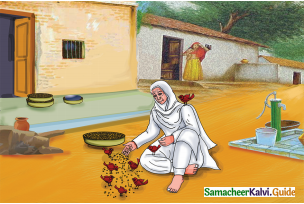
நான் பல்கலைக்கழகத்துக்கு படிக்கச் சென்றபோது. எனக்கு தனி அறை வழங்கப்பட்டது. எங்களது பொது தோழமை முறியப்பட்டது (snapped). எனது பாட்டி தனிமையான (seclusion) இடத்தை ஏற்றுக்கொண்டார். யாருடனும் பேசுவதற்காக மட்டுமே எப்பொழுதாவது தான் சுழற்றும் கைராட்டையை நிறுத்துவாள். காலை தொடங்கி மாலை வரை சுழலும் சக்கரத்தில் அமர்ந்திருந்து பிராத்தனைகளை ஒப்புவிப்பாள்.
மதியவேளை மட்டும் சற்று நேரம் எழுந்து குருவிகளுக்கு உணவு அளிப்பாள். அவள் வீட்டின் தாழ்வாரத்தில் (முற்றத்தில்) அமர்ந்துக் கொண்டு ரொட்டி துண்டை சிறு துண்டுகளாக்கி பறவைகளுக்கு கொடுப்பாள். நூற்றுக்கணக்கான சிறு பறவைகள் அதை எடுத்து சாப்பிட்ட, மெய்யான கூச்சல் குழப்பம் கலகலப்பான ஒலி நிறைந்த இடமாக அது மாறும். சில பறவைகள் அவள் கால்களிலும் சில அவளின் தோள்களிலும் சில பறவைகள் தலையிலும் கூட அமர்ந்திருக்கும். அவற்றைப் பார்த்து சிரிப்பாளே தவிர அவற்றை விரட்டியது இல்லை. அந்த அரைமணி நேரம் அவளுக்கு மகிழ்ச்சியான நேரமாக இருக்கும்.
மேல்நிலைப்படிப்புக்காக நான் வெளிநாடு செல்ல முடிவெடுத்தபோது என் பாட்டி மனமுடைந்து (upset) போவாள் என்று எனக்குத் தெரியும். முதிர்ந்த வயதில் வெளியில் சொல்ல முடியாத வகையில் நான் ஐந்து ஆண்டுகள் அவரை விட்டு பிரிந்து இருந்தேன். அவர் என்னை ரயில் நிலையத்தில் விட்டுச் செல்லும் போது எந்த ஒரு வார்த்தையையும், உணர்வையும் வெளிக்காட்ட வில்லை.
அவளின் உதடுகள் மட்டும் ஜெபங்களை ஒப்பிவித்து கொண்டிருந்தன. அவரது விரல்கள் ஜெபமாலை முத்துக்களை எண்ணிக் கொண்டிருந்த வேலையில், என் நெற்றியில் மெதுவாக முத்தமிட்டாள். நான் அவளை விட்டு வரும்போது நேசத்துக்குரிய பாசம் தென்பட்டாலும் அது எங்களது கடைசி உடல்தொடர்பு என உணர்ந்தேன்.
ஆனால், அது அப்படி நடக்கவில்லை . ஐந்து ஆண்டுகள் கழித்து திரும்பி வந்து மறுபடியும் புகைவண்டி நிலையத்தில் நான் பாட்டியை சந்தித்தேன். அவளின் பழைய இயல்பை பார்க்கவில்லை. அவள் வாயில் வார்த்தைகள் இல்லை அவள் என்னை கட்டி அனைத்தாள். அப்போதும் அவள் ஒப்புவிக்கும் ஜெபத்தை நான் கேட்கமுடிந்தது. எனது முதல் நாளில் அவளின் மகிழ்ச்சியான தருணங்களாக நினைத்து, நீண்ட நாட்களாக உணவளித்த பறவைகளைக் கடிந்து கொண்டாள்.
மாலை நேரத்தில் அவளிடத்தில் ஒரு மாறுதல் தெரிந்தது. அவள் ஜெபங்கள் இப்போது செய்வதில்லை. பக்கத்து வீட்டில் உள்ள பெண்களை அழைத்து பழைய கொட்டு ஒன்றை வைத்துப் பாட்டு பாடுவாள். பல மணி நேரமாக பழமையான கொட்டை வைத்து (Dilapidated drum) (தாயகம்) வீடு திரும்பும் வீரர்களின் பாடலை பாடினாள். நாங்கள் அவளை கடுஞ்சோர்வு அடைந்துவிடக் கூடாது என்பதற்காக நிறுத்துவோம். அவள் ஜெபம் செய்யாமல் பார்ப்பது இதுவே முதல்முறை.
மறுநாள் காலையில் அவளுக்கு உடம்பு சரியில்லாமல் போய்விட்டது. மிதமான காய்ச்சல்தான். மருத்துவர் அது எளிதில் குணமாகிவிடும் என கூறினார். என் பாட்டி வேறுமாதிரி நினைத்தாள். என் வாழ்க்கையின் கடைசி அகராதியை (இறப்பு) முடிப்பதற்கே ஜெபங்கள் செய்வதை விலக்கி வைக்கிறேன் என்றும், எங்களோடு பேசி நேரத்தை வீணாக்க விரும்பவில்லை என்றும் கூறினாள்.நாங்கள் போராடினோம் (Protested).
![]()
ஆனால் அவள் எங்கள் போராட்டத்தை புறக்கணித்தாள் (Ignored). தனது படுக்கையில் அமைதியாக படுத்துகொண்டு ஜெபங்கள் மற்றும் மணிகள் சொல்லிக்கொண்டாள். நாங்கள் நினைப்பதற்க்குள் ஜெபமாலை அவளின் உயிரற்ற விரல்களில் இருந்து கீழே விழுந்தது. ஒரு அமைதியான வெளுப்பு நிறம் (Pallor) அவள் மேல் தோன்றியது. பின்பு அவள் இறந்தது எங்களுக்குத் தெரிந்தது.
நாங்கள் அவளை கட்டிலில் இருந்து கீழே இறக்கி வைத்து எங்களின் சம்பிரதாய முறைப்படி அவரின் உடலை சிவப்பு துணிகளால் சுற்றினோம். சற்று நேரம் அழுதுவிட்டு இறுதிச் சடங்கு (Funeral) ஏற்பாடு செய்ய சென்றோம். மாலை நேரத்தில் அவரது அறைக்கு சென்று stretcherல் எடுத்துக்கொண்டு அடக்கம் செய்ய சென்றோம். சூரியன் மறையும் போது அவரது அறையில் உள்ள விளக்கிலும் ஒளியை ஏற்றிவிட்டு சென்றோம். நாங்கள் பாதி வழியில் திண்ணையில் நின்றோம்.
என் பாட்டியின் அறை தாழ்வாரத்தில் (முற்றத்தில்); அவளை சுற்றி உள்ள துணிகளில் குருவிகள் நின்றுக் கொண்டிருந்தன. அங்கு மகிழ்ச்சி இல்லை. நாங்கள் அவற்றைப்பார்த்து வருந்தினோம். என் அம்மா அவற்றிற்கு சில ரொட்டி துண்டுகள் போட்டாள். ஆனால் அக்குருவிகள் அவற்றை பார்க்க கூட இல்லை. நாங்கள் என் பாட்டியின் பிணத்தை எடுத்துச் செல்லும் போது அவைகளும் மெதுவாக பறந்து சென்றன. அடுத்த நாள் தூய்மை செய்பவர் ரொட்டி துண்டுகளை கூட்டி குப்பைத் தொட்டியில் போட்டார்.
